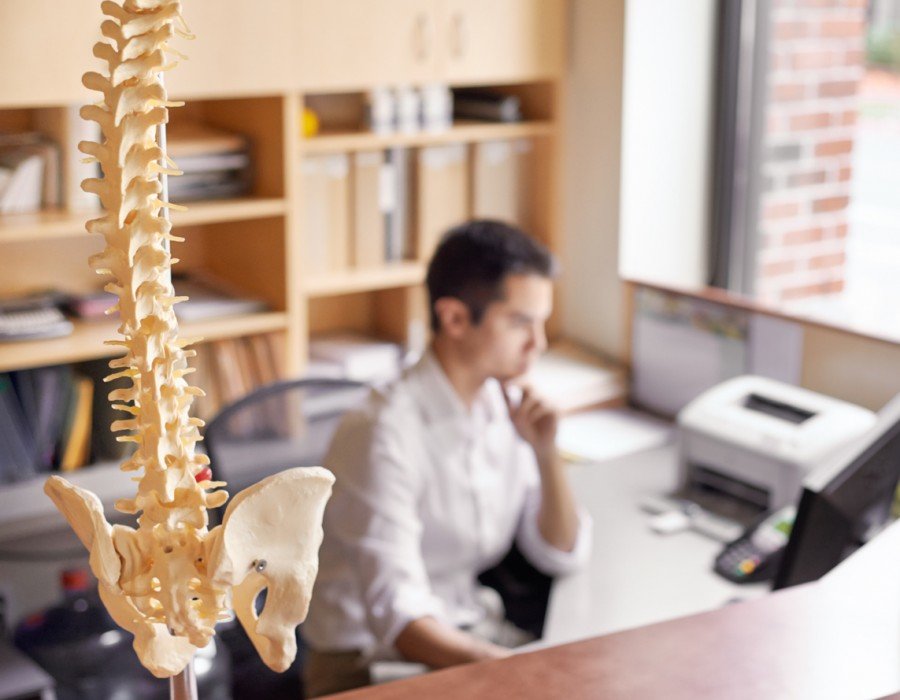General
Osteopathy Consultation: What to expect on your first visit

At Bodyset we are proud to offer a number of services to our clients, from sports massage and Physiotherapy to cycling assessments and Osteopathy. Today, Bodyset Osteopath Paige gives us an insight into what happens during an Osteopathy consultation. You may have seen her previous blog post in which she examined the differences between Osteopathy and Physiotherapy. If not, we’ll recap with a definition of Osteopathy.
What is Osteopathy?
Osteopathy focuses on the diagnosis, treatment, prevention and rehabilitation of musculoskeletal disorders; those occurring in our bones, muscles, fascia, tendons and ligaments. Osteopaths work to restore the whole body to a state of balance, resulting in pain relief, optimum bodily functioning and protection against illness and injury.
Many Osteopaths say that new patients arrive at the clinic after suffering weeks, months or even years of pain. Because they didn’t know what to expect from Osteopathy many patients are often too nervous to make an appointment.
Today I’m sharing everything about your first Osteopathy appointment to put your mind at ease and encourage you to book.
Initial Osteopathy Consultation
Your Osteopathy appointment will last between 30 minutes and one hour. To start, your Osteopath will ask lots of questions to gather as much information as possible regarding your current problem. The consultation will take from 10-15 minutes and will cover your current health issues, medical history, medication and general lifestyle. The Osteopath needs to build a full picture of your lifestyle, health and presenting symptoms. This will help them to make an accurate diagnosis and create an appropriate treatment plan for you.
Do feel free to ask the practitioner questions throughout your session.
Examination
After the consultation, your Osteopath will need to examine you. This often requires you to remove some clothing so that they can assess and palpate the parts of your body that are causing (or could be causing) discomfort.
Osteopathy is a holistic therapy which views the body ‘as a whole’. You may therefore be asked to remove clothing from your top and bottom to allow an assessment of the whole of your body. It is generally best to wear comfortable clothing or sportswear. If you feel uncomfortable with this then please discuss it with your practitioner.
Your Osteopath will ask you to carry out various movements that are specific to the area of discomfort. You may also need to move other parts of your body that are linked to the painful area. We know that it can be difficult to perform some of these movements whilst in pain but it is an essential part of the process. Your Osteopath will watch your movements to help make an accurate analysis about why you are experiencing your issue. They’ll also use palpation, a highly-developed sense of touch learnt in training, to assess the health of your joints, muscles and ligaments.
Diagnosis and treatment
After collecting all the information they need your Osteopath will make a diagnosis. They’ll then discuss a course of treatment with you, with the aim of reducing pain and improving your body’s mobility.
Your treatment will include a range of gentle, non-invasive techniques such as hands-on manual massage, joint mobilization, stretching, muscle energy techniques and joint manipulations (cracking).
At the end of your session, your Osteopath will give you a programme of at-home exercises and lifestyle advice. Make sure that you practise these between sessions to see continual improvement in your symptoms. It is common to feel some discomfort from your treatment for one to two days afterwards; you’ll be given advice about how to combat this.
Future sessions
Your Osteopath will suggest how many sessions you are likely to need. However, it is difficult to give an accurate number initially as everyone is unique and there are many factors to consider. These include: how your body responds to the treatment; how long you have had the problem; how well you follow the at-home exercises and lifestyle advice; and whether your pain is caused by trauma or is chronic. To give a rough guideline, NICE found that most patients’ lower back pain is treated in around nine sessions over a twelve-week period.
Most Osteopaths will begin treatment during the first session but sometimes a condition or symptom requires further investigation before treatment can start. In such cases, you may be referred for a scan or to your GP for further tests e.g. blood tests.
Your Osteopath is here to help you get better. If you have any questions for them before you start your journey back to health, give them a call; they are more than happy to answer all your queries.
If you think that Osteopathy can help you, then please don’t hesitate to get in touch. Any questions? Contact our friendly customer service team by calling 033 0333 0435 or emailing clientcare@bodyset.co.uk. You can also find us on Twitter, Facebook and Instagram.